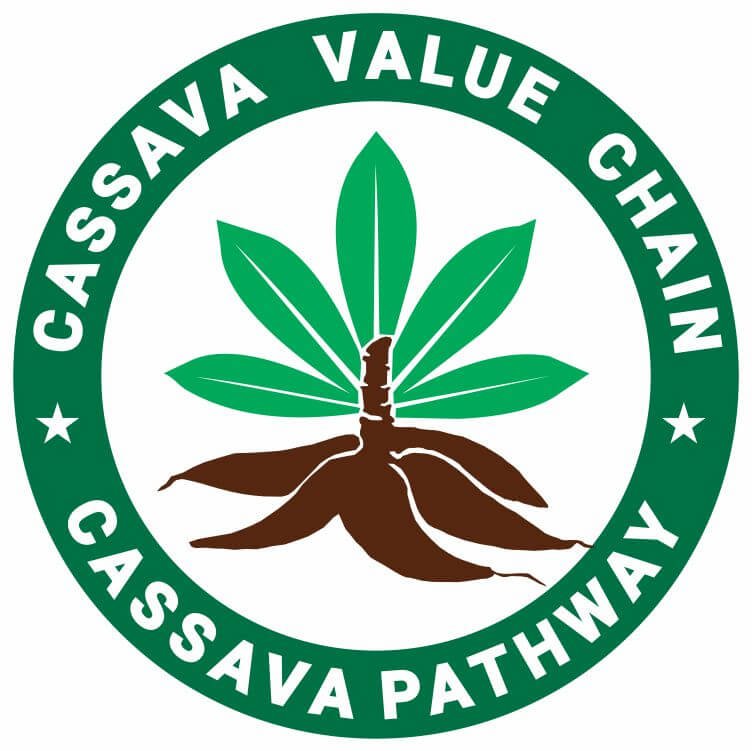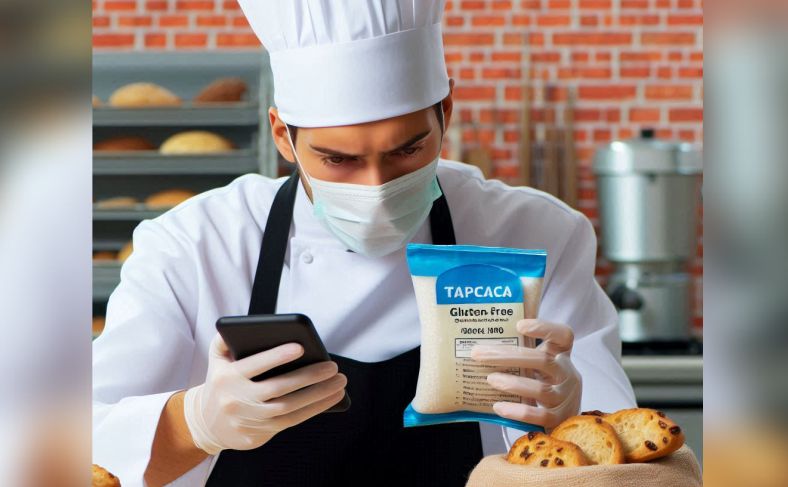Does tapioca have gluten? Understanding the gluten-free nature of tapioca requires a grasp of what gluten is and its implications for those with dietary restrictions.
Gluten is a term that refers to proteins found especially in wheat, barley, and rye. It has elasticity properties and adds that to the structure of the dough, which is needed in baking.
However, for people who are diagnosed with celiac disease, are gluten-sensitive, or have a wheat allergy, eating gluten can jeopardize their health.
A gluten-free diet is important for managing these conditions, prompting the use of alternative ingredients that imitate the properties of gluten-containing grains without causing dangerous reactions.
The rising popularity and demand for gluten-free products have made naturally gluten-free ingredients like tapioca popular.
Its ability to provide texture and thickness in gluten-free recipes reflects its importance in modern cooking and baking.
So is Tapioca Gluten-free?
Yes, tapioca is naturally gluten-free. Derived from the cassava root, tapioca is a starchy ingredient used in various recipes as a thickener or base for dishes. Since it comes from a plant rather than grains that contain gluten, it is a safe option for those with celiac disease or gluten sensitivity.
Tapioca’s Composition: Examining the Ingredients
The process of extracting tapioca from cassava is meticulous, ensuring that the end product is naturally gluten-free.
The absence of gluten in tapioca can be attributed to the composition of cassava itself.
Cassava does not contain any of the gluten proteins found in wheat, barley, or rye, making tapioca a safe alternative for people with celiac disease or gluten sensitivity.
The extraction process further guarantees that no cross-contamination with gluten-containing grains occurs, preserving tapioca’s gluten-free integrity.
When comparing tapioca to other starches such as corn starch or potato starch, its unique properties become evident.
Related Posts
Is Cassava Good for Weight Loss?
What is Modified Tapioca Starch?
Tapioca Pudding: How to Make it
Substituetes for Tapioca Starch
How to Make Boba Pearls at Home
Tapioca vs Corn Starch and Potato Starch
Unlike corn starch, which may sometimes be processed in facilities handling wheat, the production of tapioca typically occurs in dedicated environments free from gluten.
Potato starch, while also gluten-free, is derived from potatoes that contain amylose and amylopectin, whereas tapioca is composed predominantly of pure carbohydrate content without complex proteins.
Health Benefits of Gluten-Free Tapioca
Incorporating tapioca into a gluten-free diet can offer numerous health benefits and serve as a reliable ingredient in various recipes.
For individuals with gluten sensitivity, finding suitable alternatives to traditional gluten-containing foods is important.
Tapioca provides a unique, starchy texture that can replace wheat flour and other gluten-based thickeners in recipes.
This substitution not only allows for safer consumption but also enhances the variety in a gluten-free diet.
From breads and cakes to thickening soups and sauces, tapioca’s utility is noteworthy.
How to Know if Tapioca is Gluten-Free
While tapioca itself is gluten-free, the risk of cross-contamination exists, especially with processed products.
Cross-contamination can occur if tapioca is produced in facilities that also handle gluten-containing grains, potentially leading to trace amounts of gluten in the final product.
Therefore, it is essential to be vigilant when purchasing tapioca products.
How to Ensure Your Tapioca is Gluten-Free
To ensure that the tapioca you consume is gluten-free, follow these guidelines:
1. Check the Product Information on the Label
Always read the ingredient list on tapioca products.
Look for any hidden sources of gluten, which can sometimes be present in flavorings, thickeners, or added starches.
Additionally, check the allergen information for mentions of wheat or gluten.
2. Look for Gluten-Free Certification
Products labeled as “gluten-free” must stick to strict regulations. In the U.S., this label indicates that the product contains less than 20 parts per million (ppm) of gluten, a safe threshold for people with gluten intolerance.
Some products may even carry a certified gluten-free seal, which means they have been tested and certified by third-party organizations to contain less than 10 ppm of gluten.
3. Choose Reputable Brands
When buying tapioca, go for tapioca products from reputable brands that specialize in gluten-free foods.
Brands like Bob’s Red Mill, Anthony’s, and Edward & Sons offer gluten-free tapioca options that are processed in dedicated gluten-free facilities. This reduces the risk of cross-contamination significantly.
4. Be Cautious with Processed Foods
When it comes to processed foods that contain tapioca, such as tapioca pudding or bubble tea, be particularly careful.
These products may include additional ingredients that could contain gluten.
If you’re dining out, ask about the preparation methods and whether the food is made in a gluten-free environment.
Using Tapioca in Gluten-Free Cooking
Incorporating tapioca into gluten-free cooking offers a versatile and effective way to craft delicious and safe meals.
Tapioca, derived from the cassava root, is inherently gluten-free and can be employed in various dishes, enhancing both texture and flavor. One popular use of tapioca is in making tapioca pudding and boba pearls.
This classic dessert combines tapioca pearls with milk, sugar, and vanilla to create a creamy, comforting treat that caters to gluten-free dietary needs.
Beyond desserts, tapioca flour is a valuable ingredient in gluten-free baking.
When used in combination with other gluten-free flour like rice flour, almond flour, or potato starch, tapioca flour lends a light, chewy consistency to baked goods such as bread, cookies, and pancakes.
The flour’s mild taste ensures it does not overpower other flavors, making it an ideal component in various recipes.
Tapioca also excels as a thickening agent, enhancing the texture of sauces and soups.
A small amount can improve gravies or sauces without altering their flavor profile.
To utilize tapioca as a thickener, it is generally recommended to dissolve it in a bit of cold water before slowly adding it to hot liquids, thereby avoiding lumps and ensuring a smooth consistency.
To maximize the use of tapioca in gluten-free cooking, here are some practical tips:
- When making pudding, soak tapioca pearls in water for about 30 minutes to reduce cooking time and achieve optimal texture.
- For baking, use tapioca flour as part of a gluten-free flour blend to avoid excessive chewiness; typically, 20-30% of the total flour weight can be tapioca flour.
- When thickening sauces, start with a small amount, such as one tablespoon, and gradually increase if needed to avoid over-thickening the sauce.
Conclusion
Is tapioca gluten-free? Tapioca is inherently gluten-free, making it a suitable choice for those with celiac disease or gluten sensitivity.
Derived from the cassava root, tapioca provides a safe alternative to gluten-containing ingredients and adds valuable texture and thickness to various recipes.
Its careful extraction process and versatility in gluten-free cooking highlight its importance for maintaining a diverse and safe diet.
References:
- https://www.livestrong.com/article/13726369-tapioca-gluten-free/
- https://nuuglu.co.uk/blog/is-tapioca-gluten-free/
- https://foodisgood.com/is-tapioca-syrup-gluten-free/

Chimeremeze Emeh is a writer and researcher passionate about Africa’s most transformative root crop—cassava. Through his work at cassavavaluechain.com, he explores the entire cassava industry, from cultivation and processing to its diverse applications in food, health, and industrial use.
He also writes for palmoilpalm.com, where he shares his extensive experience and deep-rooted knowledge of palm oil, covering red palm oil, palm kernel oil, and refined products. His work there reflects his lifelong connection to agriculture and his commitment to promoting sustainable value chains in Africa.
Driven by curiosity and purpose, Chimeremeze aims to shed light on how cassava continues to empower communities, strengthen food systems, and link traditional farming wisdom with modern innovation.

